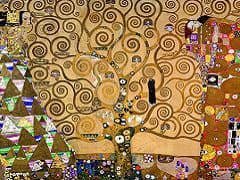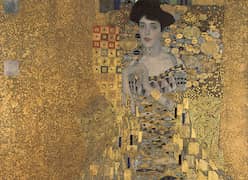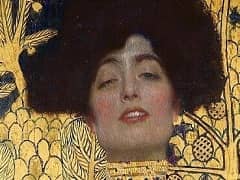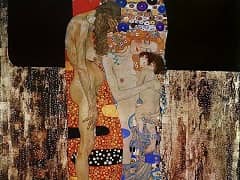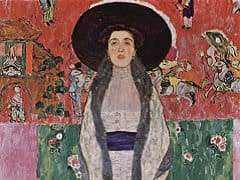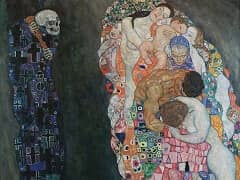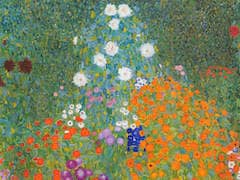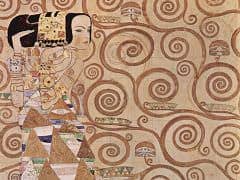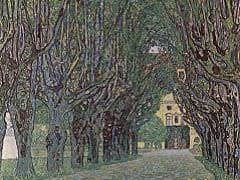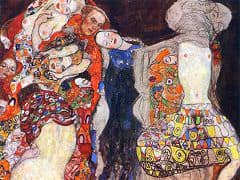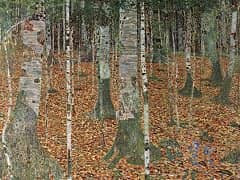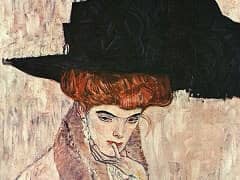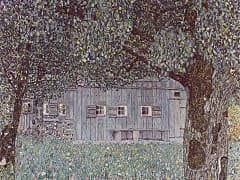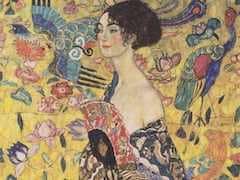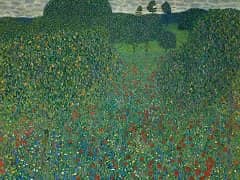Hope II, 1907 by Gustav Klimt

A pregnant woman bows her head and closes her eyes, as if praying for the safety of her child. Peeping out from behind her stomach is a death's head, sign of the danger she faces.
At her feet, three women with bowed heads raise their hands, presumably also in prayer - although their solemnity might also imply mourning, as if they foresaw the child's fate.
Why, then, the painting's title? Although Klimt himself called this work Vision, he had called an earlier, related painting of a pregnant woman Hope. By association with the earlier
work, this one has become known as Hope, II. There is, however, a richness here to balance the women's gravity.
Klimt was among the many artists of his time who were inspired by sources not only within Europe but far beyond it. He lived in Vienna, a crossroads of East and West, and he drew on
such sources as Byzantine art, Mycenean metalwork, Persian rugs and miniatures, the mosaics of the Ravenna churches, and Japanese screens. In this painting the woman's gold-patterned
robe - drawn flat, as clothes are in Russian icons, although her skin is rounded and dimensional - has an extraordinary decorative beauty. Here, birth, death, and the sensuality of the
living exist side by side suspended in equilibrium.
In Hope, II a woman with a skull nestled into her gown lowers her head toward her swelling belly. Below, three women also bow their heads - in prayer or possibly mourning. The
ornate decoration in Hope, II nearly overwhelms its surface. Klimt was committed to craftwork, and was among the many artists of his time who combined archaic traditions - here
Byzantine gold leaf painting - with a modern psychological subject. Klimt lived and worked in turn-of-the-century Vienna, home to Sigmund Freud, the father of psychoanalysis; Klimt's
exploration of formative drives like sex and death parallel Freud's explorations of the psyche.


